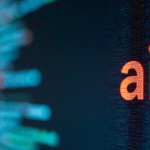The Rapid Growth of AI and Its Energy Demands
As artificial intelligence (AI) continues to grow at an unprecedented rate, so does its energy consumption. According to the International Energy Agency (IEA), data centers supporting AI are projected to account for approximately 3% of global electricity needs by 2030, doubling their current proportion.
Nvidia’s Powerful Chips and Their Energy Impact
Nvidia, a leading AI chip manufacturer, has reportedly increased the energy consumption of server clusters by over 100 times compared to two decades ago, thanks to more powerful chips and advancements in programming.
Innovative Cooling Techniques
To tackle this issue, experts like Mosharaf Chowdhury, a professor at the University of Michigan, suggest multiple approaches. One is to create more energy sources, while another is to reduce the demand for electricity through smarter solutions at every level of the AI chain, from hardware to algorithms.
Liquid Cooling Systems
A significant step forward is the widespread adoption of liquid cooling systems instead of traditional air ventilation. This method allows for higher fluid temperatures, which in turn makes cooling more efficient due to the temperature difference with external air. Amazon’s recent introduction of IRHX, a liquid cooling system that can be retrofitted into existing data centers, exemplifies this trend.
“Ganar menos dinero”
Another development is the implementation of sensors in data centers that AI can use to control temperatures on a smaller, zonal scale. This optimization can lead to significant savings in water and electricity consumption. Researchers like Pankaj Sachdeva from McKinsey have developed algorithms to accurately estimate the electricity needs of individual chips, potentially reducing consumption by 20% to 30%.
Advancements in Microprocessors
Microprocessor efficiency has also improved with each new chip generation. Yi Ding’s team at Purdue University demonstrated that it’s possible to extend the lifespan of powerful AI chips, or graphics processing units (GPUs), without compromising performance.
Programming and Training of AI Models
Efforts to curb energy consumption also extend to AI model programming and training at large scales. Chinese company DeepSeek, for instance, developed a generative AI model (R1) with comparable performance to leading US models but using less powerful GPUs. Their success was attributed to meticulous GPU programming and bypassing a traditional training phase.
Jevons’ Paradox and Future Energy Consumption
Despite these technological advancements, energy consumption may still rise due to Jevons’ Paradox. This economic principle, proposed by William Stanley Jevons in the 19th century, suggests that increased efficiency of a limited resource mechanically raises demand as its cost decreases. As AI continues to evolve, experts like Ding predict that energy consumption will likely keep rising, albeit perhaps at a slower pace.
Key Questions and Answers
- What is driving the increased energy consumption in AI? The growth of AI has led to more powerful chips, such as those from Nvidia, which consume significantly more energy than their predecessors.
- How is the AI sector addressing energy consumption issues? Through innovative cooling techniques like liquid cooling systems, optimizing temperature control with sensors, and improving microprocessor efficiency.
- What is Jevons’ Paradox and how does it relate to AI energy consumption? This economic principle suggests that increased efficiency of a resource leads to higher demand. In the context of AI, as chips become more energy-efficient, their lower cost may encourage increased usage, potentially offsetting initial energy savings.






